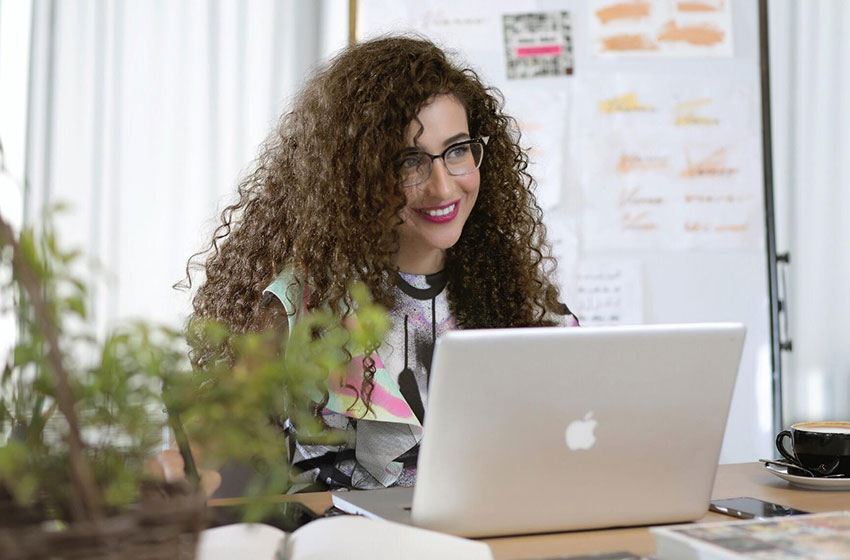Ghada Wali
A lifelong love of design and art led her to be chosen as one of the best 100 graphic designers in the world by the Society of Typographic Arts Chicago. Ghada Wali is an exceptional graphic designer and the first Egyptian woman to make it to Forbes Europe’s List 2017.
What drew you to the graphic design world?
My early obsession with form, colours, shapes, and patterns made graphic design my natural choice. I started off as a painter. I always aspired to paint portraits, people, faces, and eyes. Emotions formed my main muse. However, it was just art without a tangible function. I wanted more impact. I realized I could still be an artist and try to change the world and improve people’s lives through design and visual communication. To touch people’s hearts, brighten an idea or create a movement became my passion, so I didn’t think twice to join the graphic design world. The unseen hand of the graphic designer enhances and moulds every area of our lives. I believe that graphic design can change the world.
What is your favourite and least favourite part about this line of work? And why?
My favourite part is the creation phase, the birth of the idea and the heartfelt impact. My least favourite is the everyday struggle of trying to bring the awareness of the importance of design in a tough market like Egypt.
What/ who are you inspired by? And why?
Everything, everybody, everywhere inspires me. Inspiration can be very stupid or very complex. “From the people, by the people, to the people” is a great motto that I always keep in my mind while working on my projects.
Tell us about your favorite moments as a successful graphic designer.
When a student tells me I am his/her role model and I am the reason he or she believes in themselves and in the power of this industry, that’s one of my most treasured moments. Also, when I emphasize the role and awareness of this industry to others, that gives me great satisfaction.
What are the advantages and challenges you face as a designer in your field?
Cairo is very male driven. As a creative team leader, I had difficulty in managing young males because they couldn’t accept a female leader. If you are an Arab, you’re automatically put in the ‘terrorist/danger’ zone. Being an Arab woman is even worse! An Arab woman is raised with a million battles that she has to fight before she can even start believing in herself. There are dusty layers of gender inequality, peer pressure, religious, and race dilemmas. If she manages to shake what has been built up for years, only then can she break free and start battling the next monster. I am sure that for every story recognized, there are a million other stories that have failed to reach the public. In the face of all of these hardships, I see Arab women as the most resilient and enigmatic women on the planet. I aspire to be a role model for the Arab girls wanting to follow their dreams. If I manage through my work to truly inspire one person, that beats anything else that anyone can ever experience.
What advice would you have for someone wanting to follow in your footsteps?
They need to just start! Start anywhere, everything else will unfold. Believe in yourself, have passion, be consistent, and work hard! Turn pain into productivity! It’s the most painful experiences that create our major breakthroughs.
Have you ever expected that one day you will be this successful?
I aim to make an impact. This is my definition of success.
What are your graphic design career goals?
A person who doesn’t have a history, does not have a future. I create work that is relevant to who I am and where I come from. I have gained global recognition on the works that specifically celebrate my identity. My aim is to encompass the Arab and Egyptian flavour through portraying my work on the maps of global trends. I want to create a visual revolution in Egypt and the Middle East. I want to spread graphic design education and increase awareness of its necessity in our daily lives. I hope that one day I can be responsible for implementing the role of graphic design in education, health, politics and any other fields where design can contribute to promoting, maximizing, and reviving my country and the whole region.
What have you done to improve your knowledge of graphic design?
Drawing, sketching, conceptualizing, watching tutorials, reading design books, following the global scene, and the latest trending articles, as well as attending major design conferences, workshops, exhibitions, competitions and design events around the world.
Can you tell us about work under pressure? And how you overcome it?
It’s everyday! I don’t take weekends.

